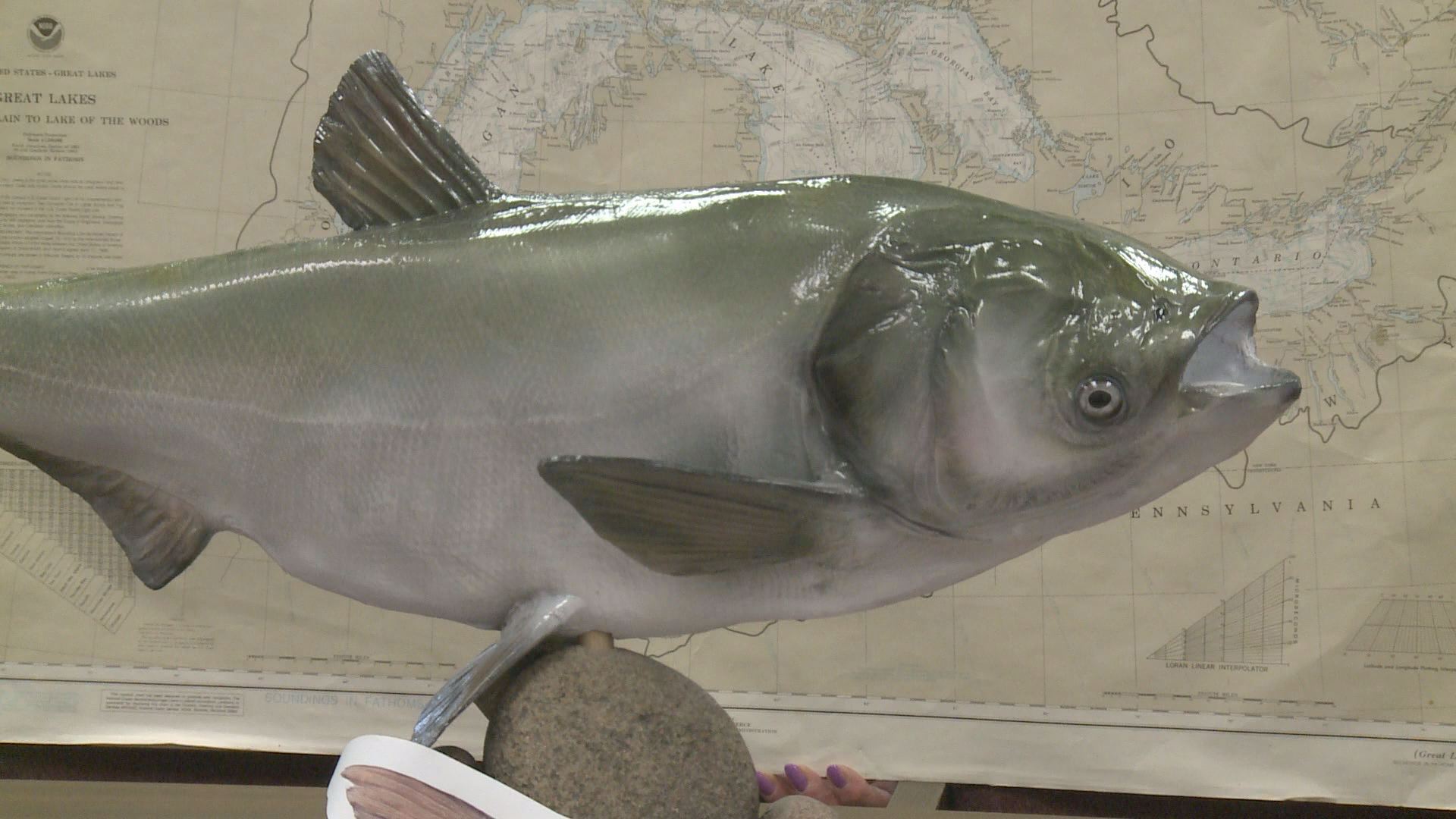BUFFALO, NY- Like a massive storm looming on the horizon, the impending advance of the Asian Carp into the Great Lakes casts a dark cloud over the environment. Bighead and Silver Carp have been established in the Mississippi River since the 1990's, and their massive unchecked population explosion has turned once rich ecosystems into monocultural wastelands. They are now thriving in the Illinois River, a tributary of Lake Michigan, and are knocking on the door of the Great Lakes.A recent study conducted jointly by the US and Canadian governments and several universities has shed some new light on the possible effect on Lake Erie these invaders may have." This study really looks at the food web." Says Helen Domske, Senior Extension Specialist with NY Sea Grant." I think typically when you hear about the threats of Asian Carp, they look just at the large fish. But there will be competition all the way down the entire food web or food pyramid. And that's the important thing, because they will compete with other fish."
Much harm could come from the impact the Carp will have on the most minute creatures in the food chain, the microscopic life that most fish depend on." This will be an entire ecosystem impact," Domske explains. " And that should make people sit up and take notice. It's not just the fish populations that will be affected, it's the Planktonic community, the Phytoplankton, Zooplankton, and they're even saying the detritus, the kind of gunk on the bottom of the lake, they could even use that for food."
The effects on that level will then resonate upwards throughout the rest of the web of life in the lake." They will be feeding on the Plankton, and so competing with the same fish. They say for example, Gizzard Shad, which are Planktivores, and Emerald Shiner which are Planktivores, they will suffer, if you think about the food web, after Plankton, Emerald Shiners would be the next step up, so , you take out these pieces of the food web, and you'll have problems."
Shad and Shiners are a big food source for adult fish, so the impact will be particularly hard on sportfishing , which is a multi billion dollar industry on Erie alone. So it should come as no surprise that anglers will be on the front line of this war." I think education is the important thing, so if you know people who fish, tell them about not moving bait, tell them about cleaning their boat, these are things that everyday people can help prevent the movement of Invasive Species."
The Western New York region has been dealing with Invasive Species of all types for decades, from Dutch Elm Disease to Zebra Mussels. But this may well be a watershed moment in our natural history, and could define our landscape for generations to come." You would think that we would learn from these,and so people should really sit up and pay attention to it." Domske tells 2 The Outdoors." This is a major issue, whether it's terrestrial or in the aquatic ecosystem, we have to do all we can to control them.".


